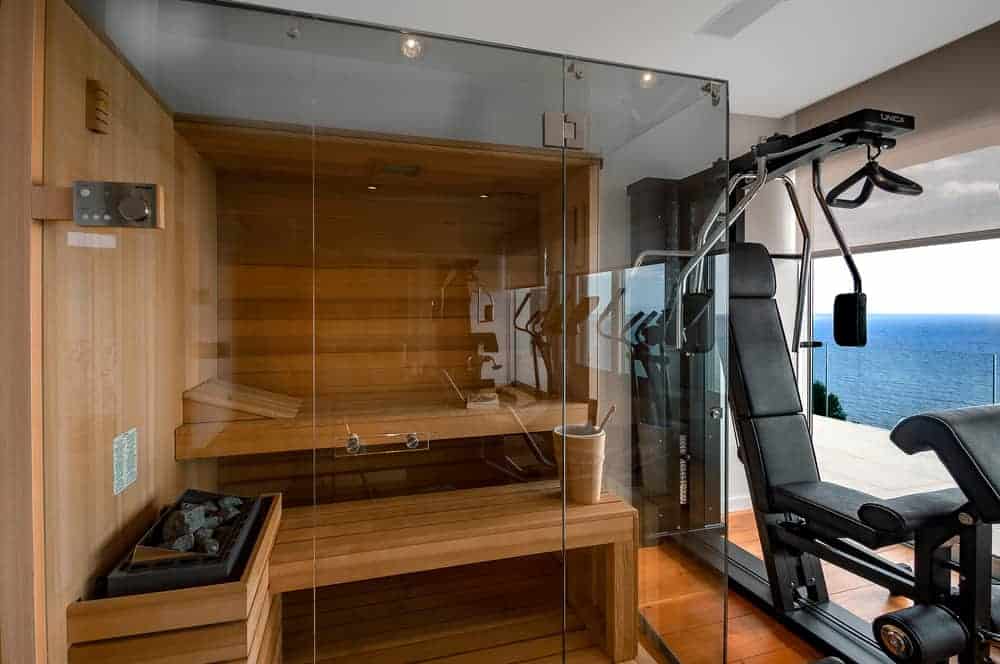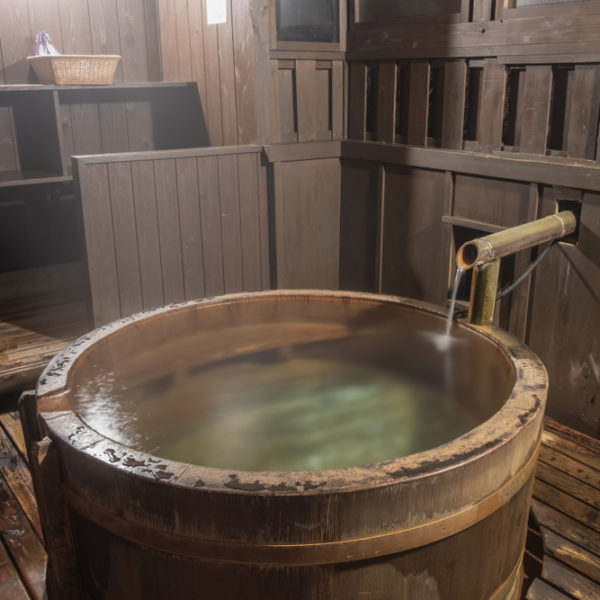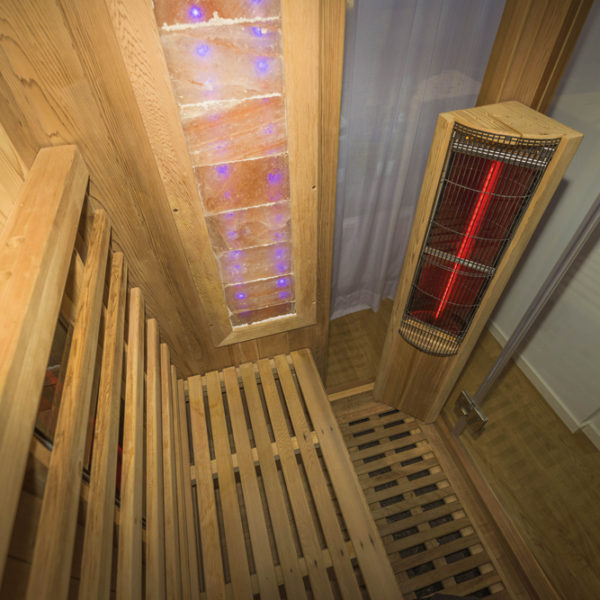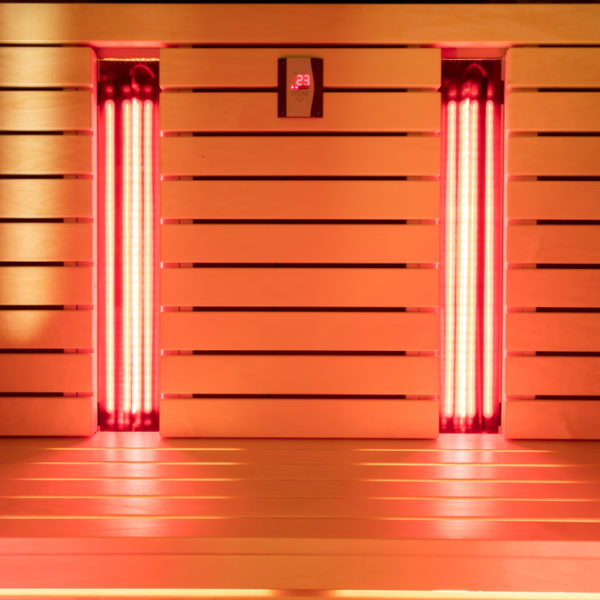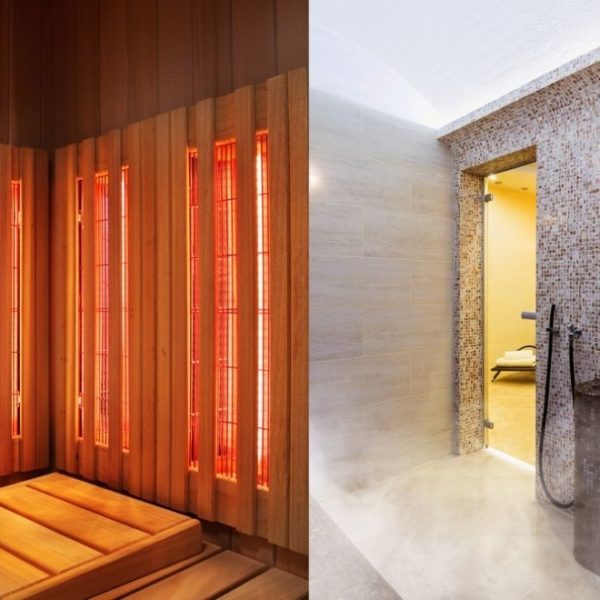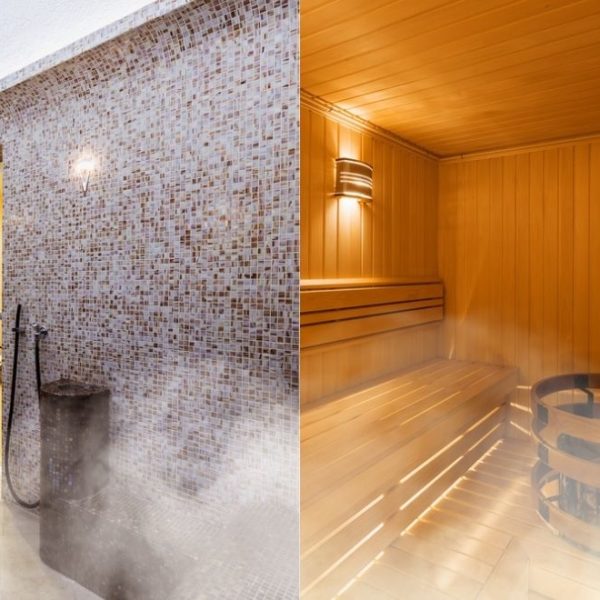Many people are now using saunas as part of their health and wellness routines. That can include taking a sauna alongside exercise.
But to get the best results, should you take a sauna before or after your workout? That’s what we’re here to find out!
We’re going to look at how saunas affect your body. And we’ll tell you everything you need to know to get the most out of your sauna experience.
So if you’re ready, let’s get started!
Sauna Before or After Workout?
The different types of sauna
Let’s start by taking a look at the different types of sauna out there.
The traditional sauna is also known as a Finnish sauna. This is a room lined in wood which is heated to a high temperature. Most saunas today are heated by electricity, but there are also traditional saunas that are wood fueled.
Inside the sauna is a basket of coals on which water is poured from time to time. This creates steam, raising the humidity levels inside the sauna.
Russian, German, Japanese and Korean style saunas all work on this same basic principle. They are hot rooms designed to make you sweat.
Infrared saunas are similar, but the way they make you hot is a little different. Rather than using fuel to warm the air, infrared saunas use radiant heat. That heats up objects inside the sauna – including people – directly. That means the air temperature is lower, which some people find more comfortable.
And because infrared saunas use infrared light, there’s no need for a basket with coals. That means they can be more flexible in their use of space. You can find infrared sauna inside tents. You can even wrap yourself in an infrared sauna blanket.
Saunas and pain relief
There are a wide range of claims for the health benefits of saunas. Some have more evidence supporting them than others. And in some cases, the claims are completely false.
Let’s separate the fact from the fiction!
The good news is that saunas can help ease pain. If you’ve ever used a heat pad on an aching muscle, you’ll know how effective it can be. Saunas work on a similar principle. When your body gets warmer, more blood flows into your muscles and tissue. That helps them to relax and reduces pain.
Various small scale research studies have shown saunas helping to ease conditions ranging from headaches to rheumatoid arthritis.
So if you’ve pulled a muscle exercising, a sauna afterwards may help manage the pain. The same goes if you’re just feeling a little sore after your workout.
But if you’re injured already, taking a sauna before working out won’t help. While it will warm up your muscles, you’ll still need to take care of your injury. And it’s not a good idea to take a sauna if you have any swelling or inflammation.
Remember – pain is your body’s way of telling you something is wrong. Don’t ignore it!
Saunas and relaxation
Whatever the scientific evidence for other claims, there’s no doubt that saunas are a great way to relax! Because they are so hot, you have no choice but to sit still. And you won’t be able to take your phone or other devices inside without damaging it.
That makes it a great place to unwind after your workout. Bask in that post-exercise glow and reward yourself with time away from everyday distractions.
Together with exercise, this is a potent cocktail for reducing stress. And as we know, lowering our stress levels can have profound impacts on our overall health. It’s another good reason for having a sauna after your workout, rather than before it.
Indeed, taking a sauna before you head to the gym is positively a bad idea. Getting into a relaxed and mellow zone is exactly where you don’t want to be before you start those star jumps!
Saunas and athletic performance
A number of studies have looked at whether saunas can help elite athletes perform better. Unfortunately, the studies to date have used small numbers of people, so it’s difficult to be confident about the results. But there are some positive indications that saunas can help performance.
One study of seven male cyclists in Australia found that using a sauna immediately after training resulted in peak plasma volume expansion. But what is plasma volume?
Well, it’s important in endurance training. The more plasma in your blood, the greater the total volume of your blood. And that gives you greater aerobic performance for the same amount of effort. It also helps you to sweat more and stay cooler. And it reduces the chances of cramp.
The results chimed with those of a 2007 study, this time of runners. The athletes took a 30-minute sauna straight after their run. This was repeated between 12 and 15 times over a three week period.
At the end of that time, the athletes’ plasma volume was 7.1 percent higher than it had been before the new regime. And their times for a 5 kilometer run improved by an average of 1.9 percent.
Alongside this performance boost, a sauna is also a good way to help you acclimatize to hot conditions. If you’re an athlete who’s going to be competing in extreme temperatures, a sauna can be valuable preparation.
All this suggests that taking a sauna after you work out can be valuable, especially for endurance athletes.
Saunas and weight loss
For some people, the main aim of working out is to burn calories and lose weight. One of the claims made for saunas is that they can help with this. But unfortunately, those claims don’t stand up to scrutiny.
You may lose a certain amount of weight in a sauna, but that will be because you’re sweating. Your body is losing water to cool itself down. That water has mass – so when it’s gone, your weight will be lower.
But we all know that water is essential to pretty much every bodily function. If we lose it, we need to replace it quickly. That’s why it’s very important to drink plenty of water before and after your sauna session. You can even sip it while you relax in the heat.
As soon as you rehydrate, all that weight will go straight back on. You need that water, so your body will retain it.
Saunas and fat
There’s similar bad news when it comes to the idea that saunas can melt away fat.
Saunas don’t have any way of doing this. All they do is make you hot, so that your body reacts to cool itself down. Your heart rate will increase, and that will burn a few extra calories. But your body also burns calories when you’re just sitting down. The difference made by sitting in a sauna is minor.
The idea that saunas can help “trim your waist” sits behind the ludicrous invention that is the sauna belt. This appears to be the latest incarnation of the corset, and it’s just as useful. Which is to say that it’s not useful at all.
Heat can’t melt away fat. But even if it could, numerous studies have exploded the myth that you can direct your fat loss at particular spots. When you diet and exercise, fat is broken down to release energy. But you’ll lose it from all over your body.
A sauna belt will just give you an overheated waist. Wear it too long, and the most likely outcome is heat rash and itchy skin. And whether you wear it before, during or after you workout won’t make any difference to that.
How to get the best from a post-workout sauna
While saunas don’t burn fat or help you lose weight in any meaningful way, they do have other benefits. Taking a sauna after exercise can increase plasma volume. And as we’ve seen, that can bring a range of bonuses for athletic performance.
So what should you do to maximize those results?
Well, some sports physiologists suggest that you should get into the sauna straight after exercise. At this point, you’ll probably already have been sweating. And that means that your body will be slightly dehydrated.
That in turn means that your plasma volume will be lower. When you step into the sauna, the heat increases your heart rate. But because you have less blood to circulate, less oxygen will be taken to your muscles.
That in turn stimulates your kidneys to produce a substance called erythropoietin, or EPO. EPO creates more red blood cells to carry more oxygen and give your muscles what they need. And that enhances your performance.
It’s considered so effective, in fact, that some athletes use EPO as a performance-enhancing drug. It’s banned by most sporting organizations, including the International Association of Athletics Federations.
But take care. Getting into a sauna slightly dehydrated means it’s more important than ever to listen to your body when you’re inside. If you start to feel unwell, get out immediately.
Don’t work too hard …
If you’re going to be taking a sauna after exercise, remember that the heat will increase your heart rate. So don’t work out too hard beforehand. On days when you’ll be taking a sauna afterwards, reduce the intensity of your exercise regime.
And when you get out of the sauna, rehydrate gradually. Some sports physiologists recommend doing so over a period of between two and three hours. Sip water gradually during this time. If you gulp down large amounts of fluids quickly, you can undo the adaptations your body has made.
It’s a traditional part of sauna culture to step out of the heat and douse yourself in freezing water. In Scandinavian countries, sauna users often roll in fresh snow!
But sports physiologists recommend a gentler transition. A warm shower, they say, can be too much of a shock, and can even make you dizzy. If you really want to shower under bracingly cold water, wait ten minutes first. That will avoid the risk of becoming lightheaded.
… And don’t spend too long in the sauna
How long you spend in the sauna is up to you. The most important thing is to stay comfortable. If you sweat too much, you can become dehydrated. That can lead to headaches, dizziness and constipation, amongst other problems.
And don’t stay inside if the heat is becoming too much. If your body is unable to cool you down sufficiently, you can suffer from heat exhaustion or even heat stroke. The latter can be fatal, so don’t take chances. If you start to feel unwell, get out of the sauna straight away.
Some of the studies of athletes in saunas suggest sessions of up to 30 minutes. That’s significantly longer than is generally recommended. A good rule of thumb is not to exceed 15 minutes. It’s not an endurance test, and staying in longer will just increase your chances of heat exhaustion.
If you do want to extend your session, some people find sauna hats helpful. These are made of woolen felt and help protect your head from the hot air. Wearing one may enable you to stay in the sauna longer without overheating.
Remember, though, that while saunas are perfectly safe for most people, for some the heat does carry risks. If you have a heart problem, low blood pressure, or you’re taking diuretics, consult your doctor before using one. The same applies to pregnant women, and to people with damaged nerves.
The verdict is in!
We hope you’ve enjoyed our look at the question of whether you should take a sauna before or after your workout.
Saunas can help you relax and unwind after exercise. They’re great at reducing stress. And they can alleviate aches and pains. There’s some evidence that they can also help enhance athletic performance.
If you’re hoping for any of those benefits, it’s best to take your sauna after your workout.
Stay hydrated, and don’t spend more than 15 minutes in the heat. Get out earlier if you start to feel uncomfortable. And don’t feel you need to plunge into a freezing shower straight away. A milder temperature or a 10-minute wait first will avoid lightheadedness.
Enjoy your workout – and your sauna!

